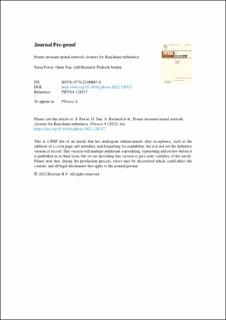| dc.description.abstract | Numerical simulations of geophysical and atmospheric flows have to rely on parameterizations of subgrid scale processes due to their limited spatial resolution. Despite substantial progress in developing parameterization (or closure) models for subgrid scale (SGS) processes using physical insights and mathematical approximations, they remain imperfect and can lead to inaccurate predictions. In recent years, machine learning has been successful in extracting complex patterns from high-resolution spatio-temporal data, leading to improved parameterization models, and ultimately better coarse grid prediction. However, the inability to satisfy known physics and poor generalization hinders the application of these models for real-world problems. In this work, we put forth a frame invariant closure approach to improve the accuracy and generalizability of deep learning-based subgrid scale closure models by embedding physical symmetries directly into the structure of the neural network. Specifically, we utilized specialized layers within the convolutional neural network in such a way that desired constraints are theoretically guaranteed without the need for any regularization terms. We demonstrate our framework for a two-dimensional decaying turbulence test case mostly characterized by the forward enstrophy cascade. We show that our frame invariant SGS model (i) accurately predicts the subgrid scale source term, (ii) respects the physical symmetries such as translation, Galilean, and rotation invariance, and (iii) is numerically stable when implemented in coarse-grid simulation with generalization to different initial conditions and Reynolds number. This work opens up a possibility of connecting physics-based theories and data-driven modeling paradigms, and thus represents a promising step towards the development of physically consistent data-driven turbulence closure models. | en_US |

